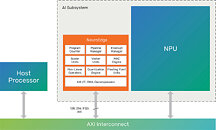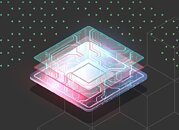Cadence Launches Cache-Coherent HiFi 5s SMP for Next-Gen Audio Applications
Next-generation consumer and automotive audio is becoming increasingly sophisticated, and market drivers such as generative AI-based audio processing, immersive soundscapes, and advanced infotainment in software-defined vehicles demand stepped-up audio DSP performance. However, a single DSP can no longer meet escalating compute needs, while multiple DSPs pose significant programming challenges.
Today, OEMs and SoC vendors must perform all multicore hardware design and software development on their own while facing increased time-to-market pressures. At the same time, programmers are grappling with the complexity of software-based synchronization of shared memory regions and the proper partitioning of tasks across the multicore cluster. This can result in designs falling short of performance expectations.
Today, OEMs and SoC vendors must perform all multicore hardware design and software development on their own while facing increased time-to-market pressures. At the same time, programmers are grappling with the complexity of software-based synchronization of shared memory regions and the proper partitioning of tasks across the multicore cluster. This can result in designs falling short of performance expectations.















































